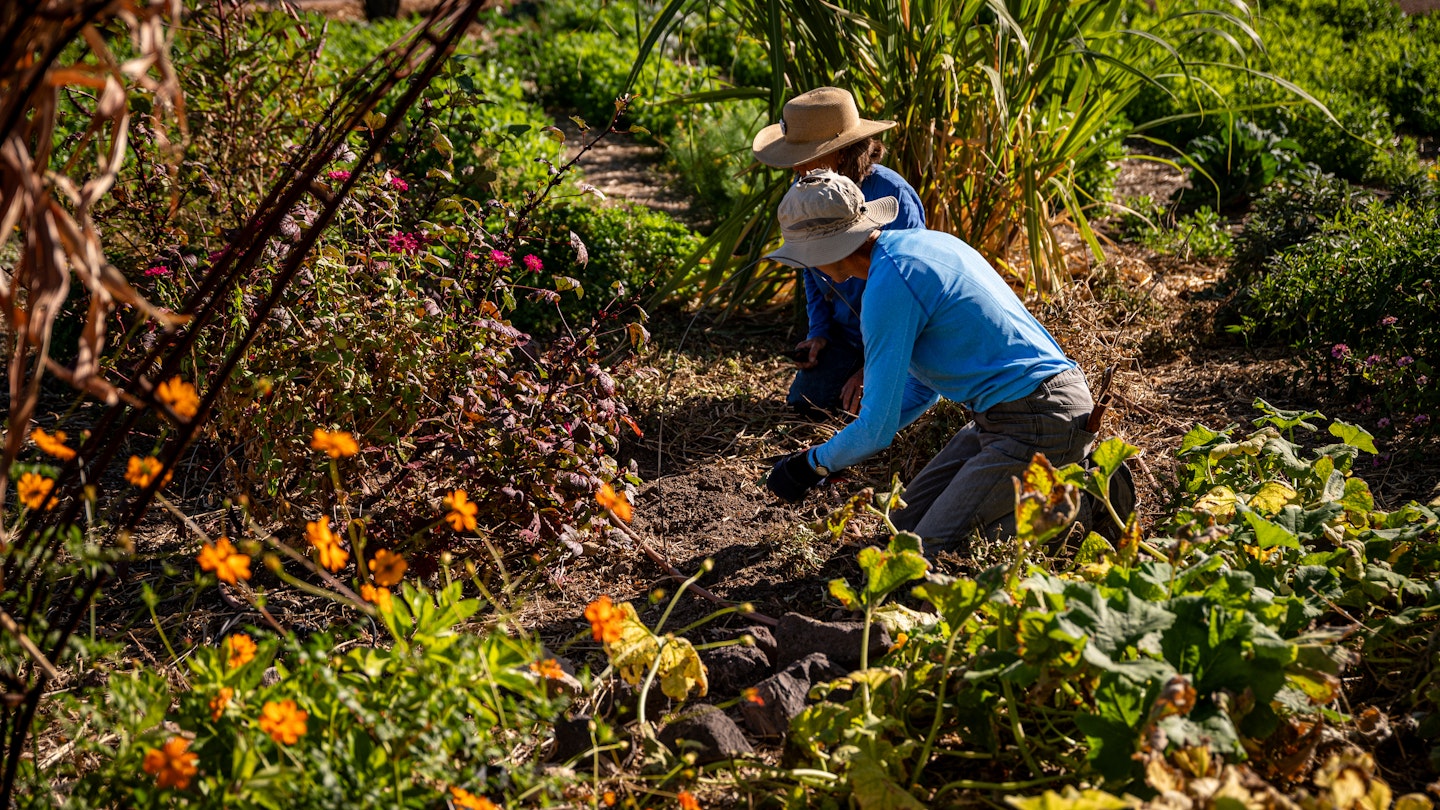Discover Tucson’s Gastronomic Heritage at Mission Garden
A humble city that prides itself on its quirks, Tucson doesn’t first appear to be a place of global gastronomic notoriety. However, a closer look reveals that Arizona’s second-largest city may be one of the most important food destinations you’ll ever visit. Tucson is a UNESCO Creative City of Gastronomy – the first in the US – thanks to its abundance of “heritage crops” that have sustained locals since time immemorial, as well as its unique flavors shaped by diverse cultures.

The best way to grasp the essence of Tucson is to visit the Mission Garden. This living agricultural museum showcases the bounty of the Sonoran Desert, highlighting the introduced crops that have thrived here and the culture these plants have helped create. Not only is it a beautiful space for a stroll, but it is also a working garden that provides food to Indigenous elders, local chefs, and Tucson charities, serving as an outdoor classroom for those eager to cultivate a relationship with the Sonoran Desert.

Tucson’s Indigenous History
The Mission Garden is situated in an area known as Cuk Ṣon, the Indigenous O’odham land from which Tucson eventually emerged. Upon entering its gates, visitors step into sacred territory. A significant section of the garden is dedicated to the foods central to local Indigenous culture for thousands of years, featuring towering corn stalks, spiky agave, striped squash, and tiny-but-mighty tepary beans. This desert ecosystem thrives because Tucson is positioned on an old floodplain with rich soil, meticulously cared for by the Indigenous people.

Cultural Outreach Liaison and Gardener, Meagan Lopez, a member of the Tohono O’odham Nation, emphasizes the importance of preserving these foodways for both Indigenous peoples and newcomers to Tucson. She reflects, “It’s important to keep these connections alive, as they have been a part of our culture and history for thousands of years.” For Lopez, these plants also impart vital life lessons that resonate deeply with the community.
A Global Influence on the Old Pueblo
While Indigenous traditions have significantly shaped Tucson’s gastronomy, influences from Europe, Africa, Mexico, and China have added further diversity. The combination of these food types has resulted in a cuisine of international importance. The garden plots illustrate this diversity perfectly. For example, the Spanish colonial orchard boasts figs, pomegranates, and grapefruits that thrive in the desert climate, while the African section features yams and moringa trees, and the Mexican plot showcases drought-tolerant crops like chilis and cacti.
Each community has played a crucial role in developing Tucson’s culinary landscape. Interestingly, Chinese immigrants were instrumental in establishing a diverse restaurant scene in the early 1900s, contributing to the gastronomic heritage that Tucson celebrates today.

The Mission Garden and the Era of Climate Change
Moreover, the garden design reflects the city’s historical richness while being forward-thinking. Understanding the past is vital for envisioning future possibilities. Tucson’s UNESCO application highlighted the value of its ecosystem and gastronomic practices, particularly as the world faces changing weather patterns. This concept contemplates “climate analogs,” referencing correlations between cities experiencing similar weather conditions.
The desert can be unpredictable, characterized by dry spells followed by flash floods. Nonetheless, the flora and fauna have adapted to these extreme conditions. Lopez notes that connecting with nature is essential, stating, “You find new appreciation for sunlight and warmth, as well as the cool and cold. This understanding can help us adapt to environmental changes.” The Mission Garden stands as a testament to resilience in the face of climate challenges.
Visiting the Mission Garden
Visiting the Mission Garden is straightforward; entry is free, and most classes and events are complimentary. Visitors can join a guided tour, highly recommended, or explore the beautiful rows of plants at their leisure. The Mission Garden offers a rich experience that connects the present with Tucson’s vibrant past.





